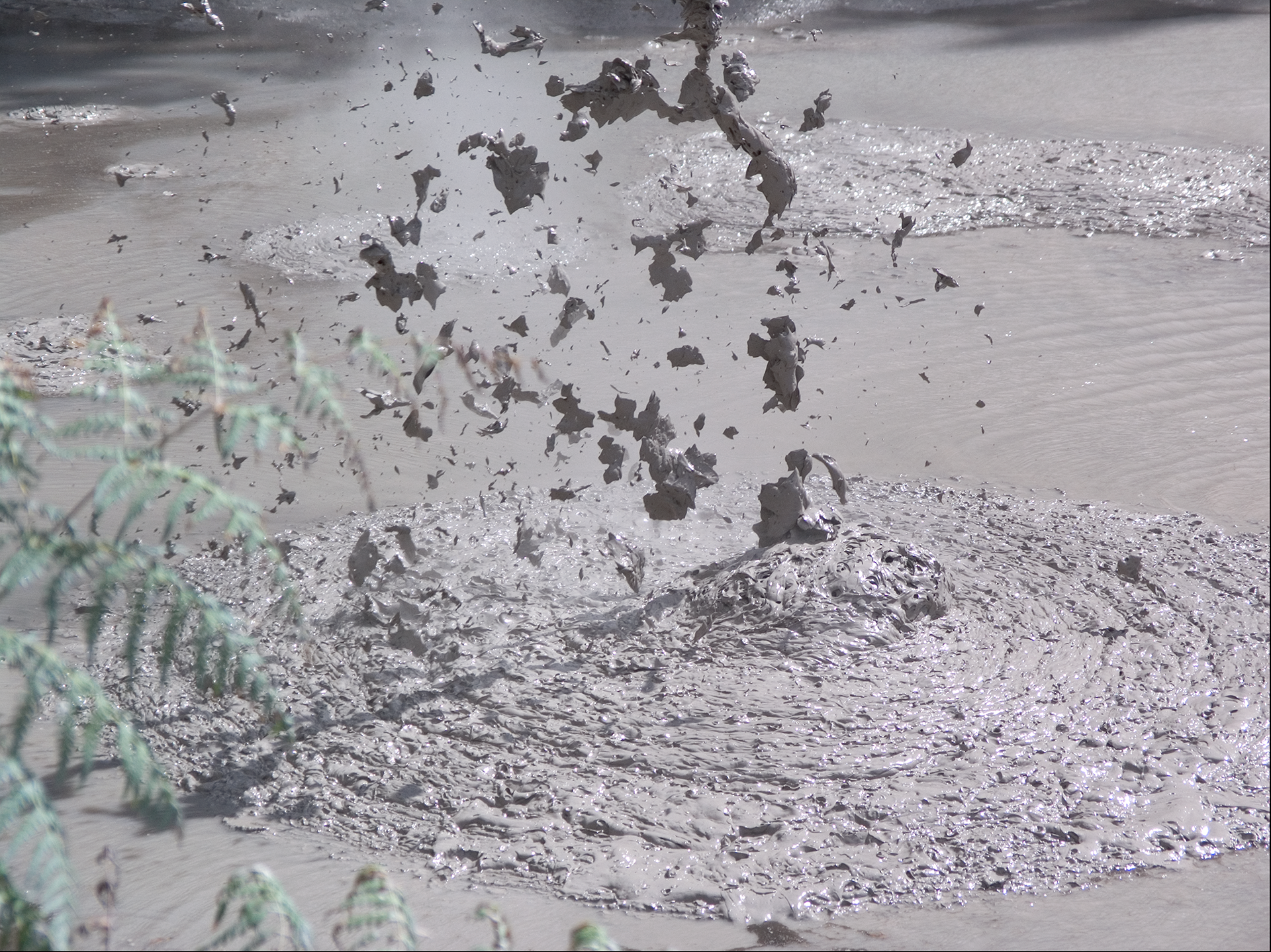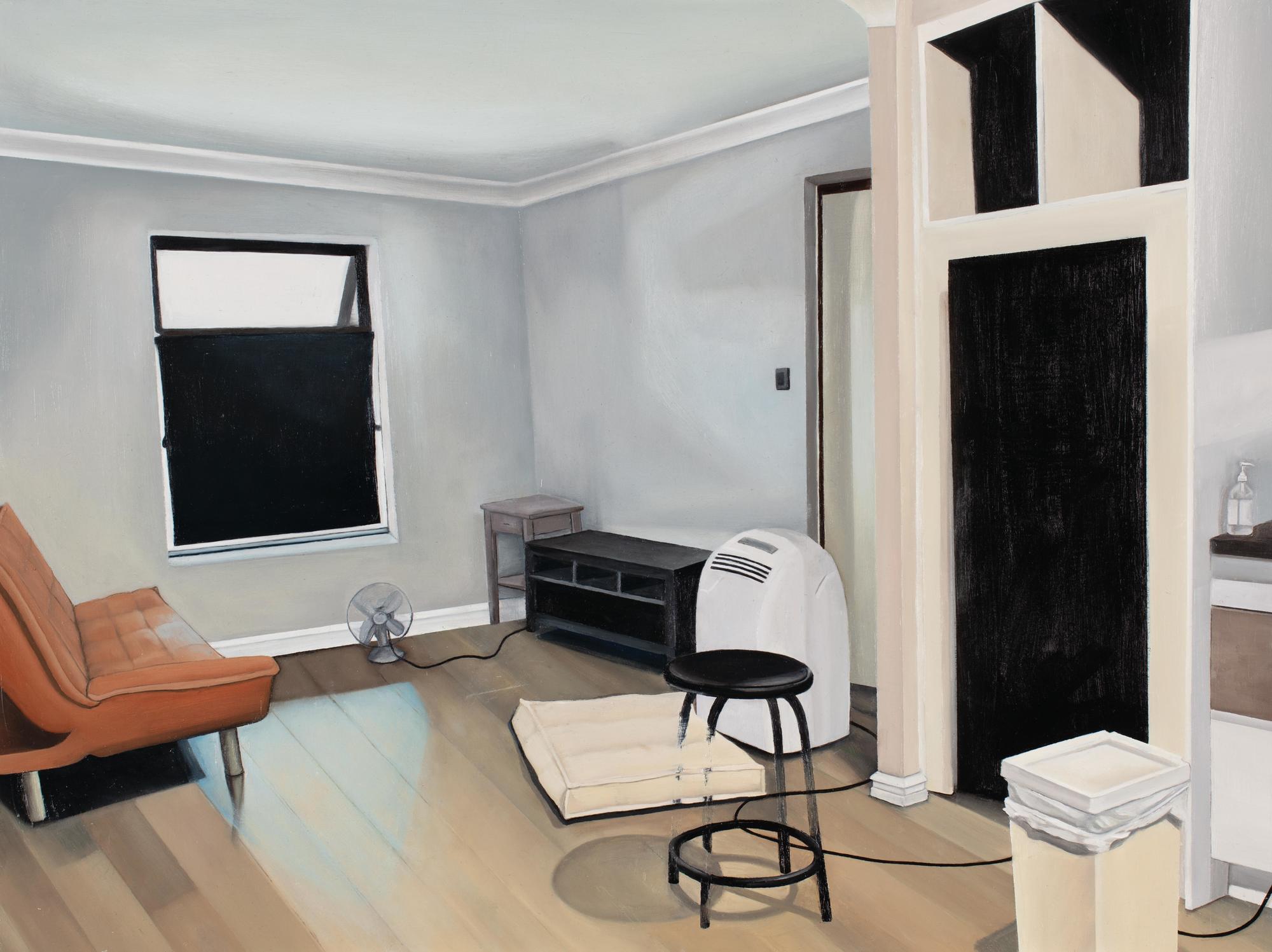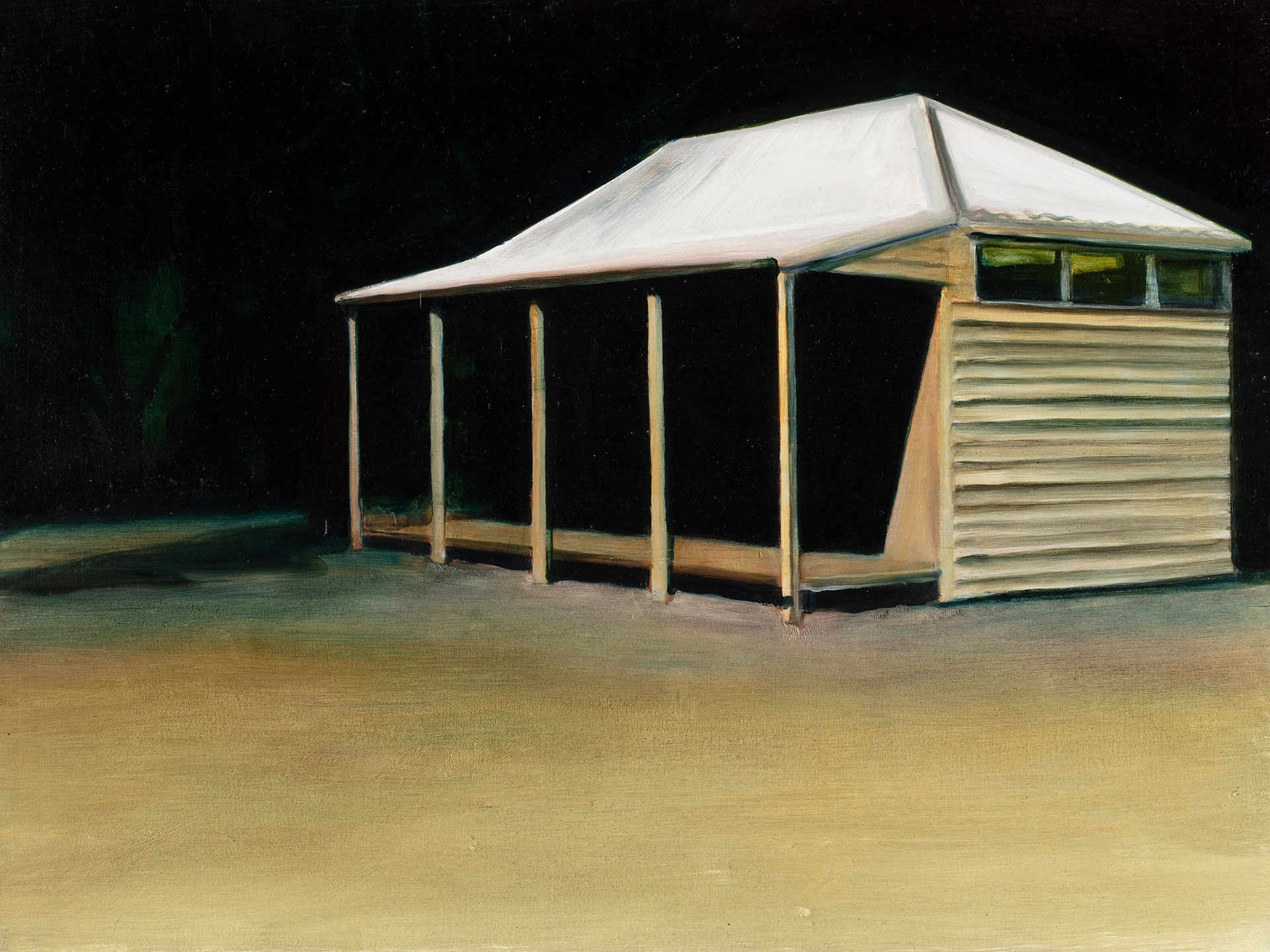34 Adidas-clad, technicolour cats roam through AGWA in Bruno Booth’s latest work
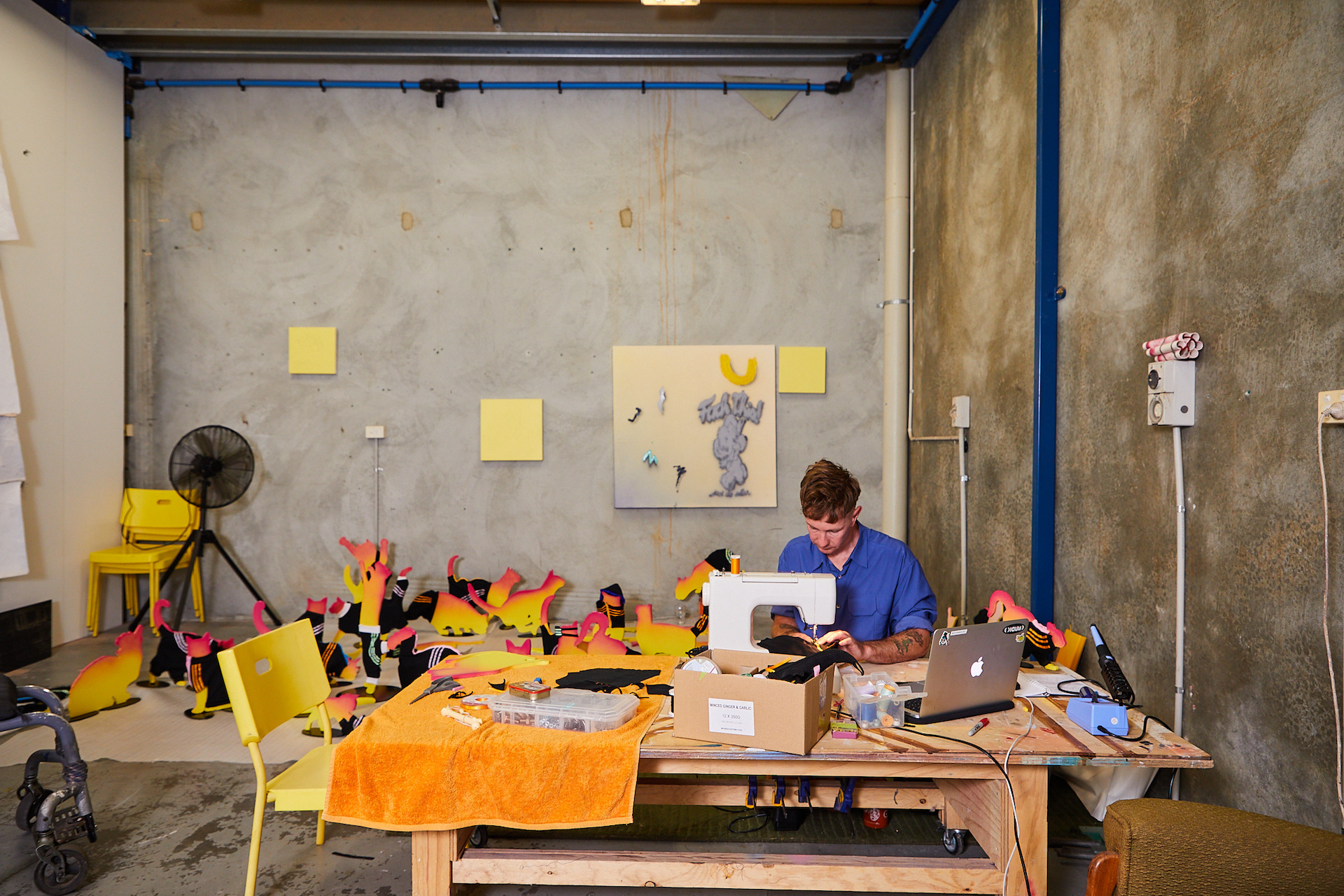
Bruno Booth. Photo by Duncan Wright.
IMMERSIVE, KINETIC AND verging on surrealist, the experience of a Bruno Booth artwork is rarely static. Some of his works make you feel like the walls are closing in on you. Others morph into a farcical obstacle course, graffitied in acid bright colours and strewn with hazards. Your eyes and brain roam with it, and you leave, slightly dizzy but buoyed by the joyful revelations that spring from his work.
A master manipulator of perspective, Booth works across installation and painting, blending the playful with the philosophical to investigate his lived experience of disability and the navigational challenges faced by wheelchair users in contemporary society.
The Fremantle-based artist’s latest work, Feline good, hbu?, will see 35 cat sculptures conspicuously placed throughout The Art Gallery of Western Australia as an exploration of accessibility in the public space.
“You would never normally see cats in a gallery space,” says Booth, who was born with a congenital malformation of his lower limbs and has used a wheelchair for most of his life. “But at the same time, they’d be at home if they were there, even if the space isn’t designed for them.”
"You would never normally see cats in a gallery space. But at the same time, they'd be at home if they were there, even if the space isn't designed for them."
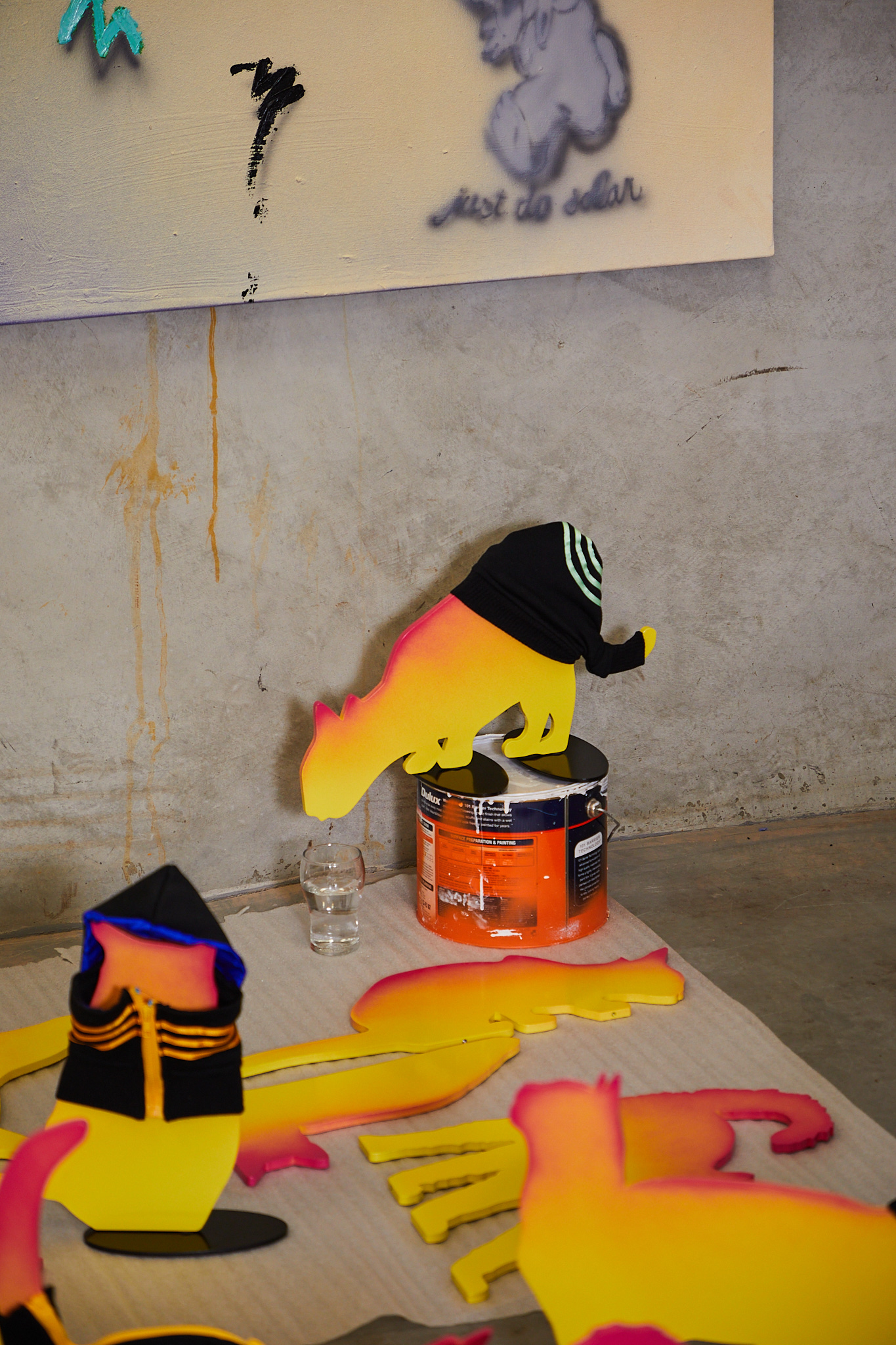
Bruno Booth Studio. Photo by Duncan Wright.
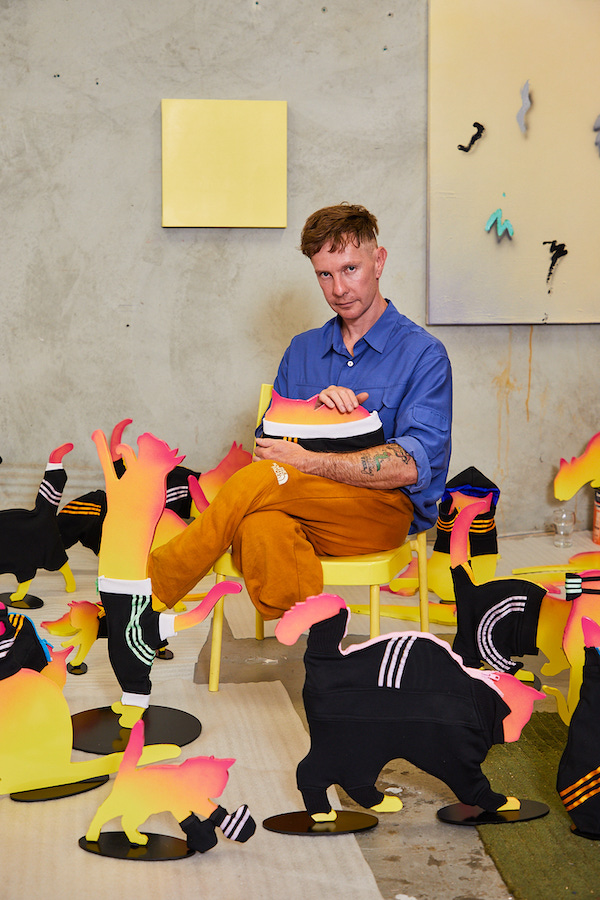
Bruno Booth. Photo by Duncan Wright.
Intricately laser-cut from aluminium to resemble the varying physical states of the housecat, the slinky silhouettes will migrate throughout the gallery for the duration of AGWA’s The View From Here exhibition. “The idea is that the cats will respond to different artworks and spaces—looking at a painting, up on a shelf, about to jump down on a sculpture,” Booth says.
The transient nature of the artwork is not only reflective of the animal itself, but also serves to strengthen the artist’s underlying message. Roaming through the unfamiliar territory of the gallery, with no set place to call home, Booth’s cats are a poetic allegory for the way people with disabilities feel in many public spaces: adrift, an afterthought, a nuisance—ultimately, that it is them who must adapt.
“Both myself and other people I know that have disabilities can feel uncomfortable in those sorts of institutions,” Booth says. “Beyond the limitations of accessibility, it is very difficult to find any references to artists with disability in art history, especially beyond the last 40 to 50 years. They simply don’t exist.”
"Both myself and other people I know that have disabilities can feel uncomfortable in those sorts of institutions. Beyond the limitations of accessibility, it is very difficult to find any references to artists with disability in art history, especially beyond the last 40 to 50 years. They simply don't exist."
Like many of Booth’s works, there are divergent layers of meaning behind Feline good, hbu?, some decidedly more irreverent than others. Take their names; all real pet cat names that Bruno collected from friends and family. There’s Mittens, Sergeant Pussy Boots, Princess Meow Meow, Fleabag and Scratchy.
Each cat is draped in Adidas paraphernalia, adding to their ‘up to no good’ appeal and serving as a critique of the fast-fashion industry.
“Just doing all the sewing and stitching for this artwork, it’s back-breaking work,” Booth says. “And then you think about someone buying a $5 t-shirt. Not to mention the amount of water it takes to produce cotton and the freight involved. It’s so destructive, environmentally and socially.”
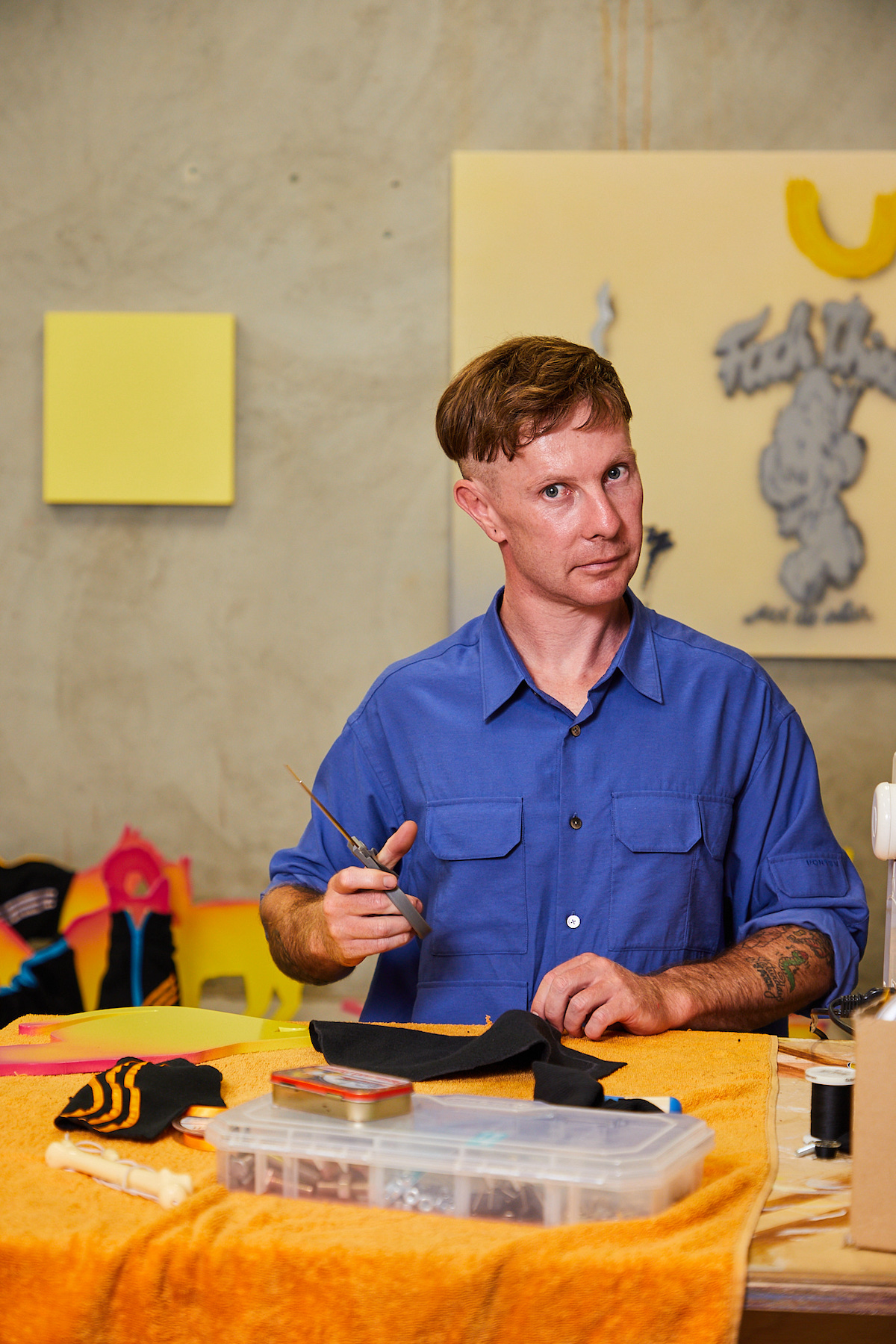
Bruno Booth. Photo by Duncan Wright.
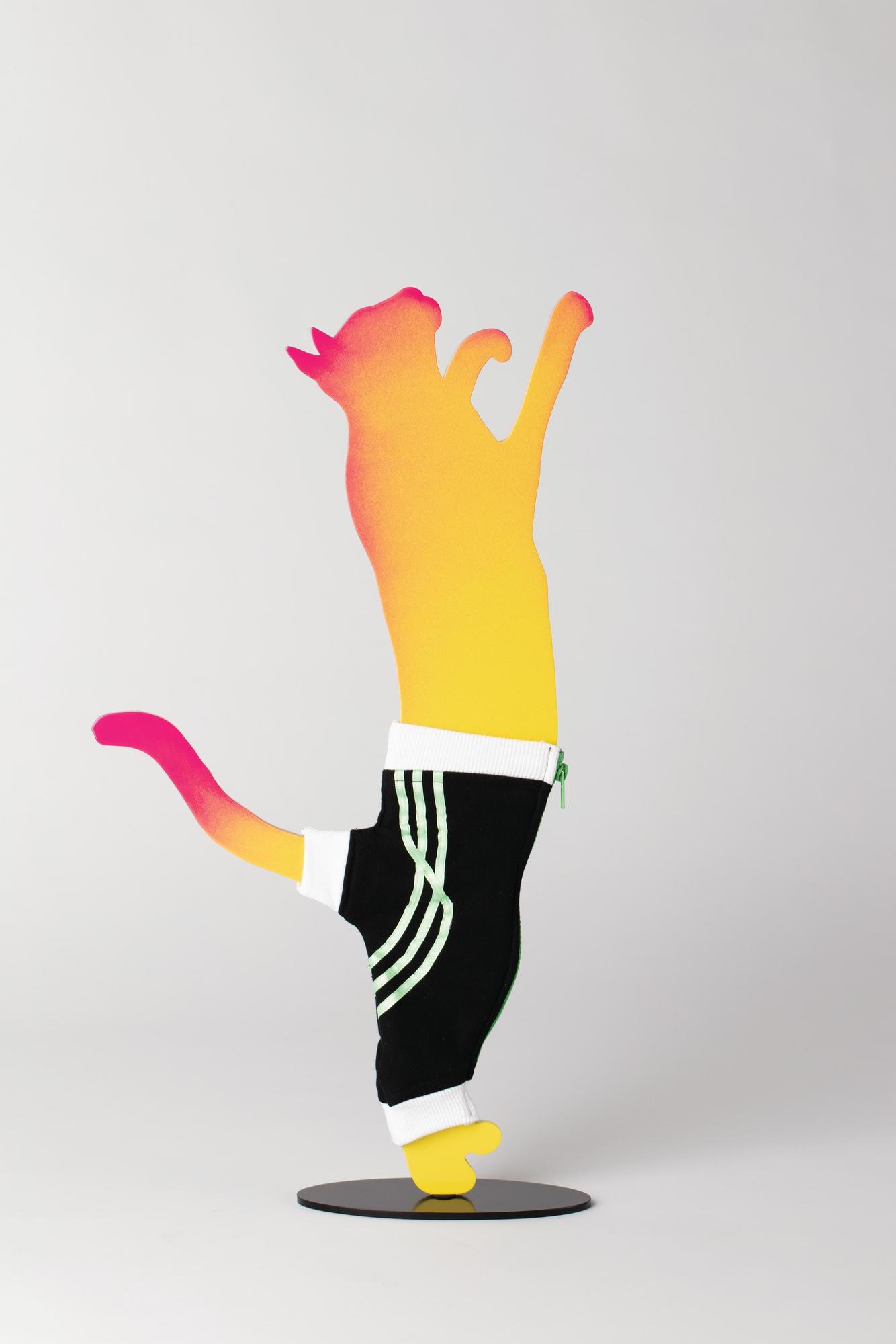
Bruno Booth Feline good, HBU?: Cat Nuts 2021. Cats: powder and clear coated paint on laser-cut aluminium; tracksuits: polyester fleece and ribbon, cotton ribbing and cotton thread, plastic and steel zips, 61.2 x 33.1 x 1 cm. State Art Collection, Art Gallery of Western Australia. Purchased through the John and Linda Bond Fund, Art Gallery of Western Australia Foundation, 2021.
Alongside his inaugural group exhibition at AGWA, Booth will participate in the Fremantle Biennale with a large-scale, participatory installation work. Then, he’ll present an installation for Next Wave Festival at PICA that invites audiences to manoeuvre through an obstacle course in a manual wheelchair.
He’s also developing a human-sized marble sculpture of his feet (a subversive take on the Renaissance sculptures which professed an idealised view of beauty) and an accompanying series of popsicles crafted from a cast of his foot. “People are always asking me what they look like,” he says. “So that’s one way of getting a squiz, but be quick before they melt!”
From giant, participatory installations to anthropomorphic popsicles, Booth is developing a distinct visual rhetoric grounded in using the element of surprise to open new frontiers of the imagination. And while the issues explored are serious in nature, Booth remains unshakably light-hearted.
“I don’t want to hit people over the head with a dour and dark message,” he says. “I want to show people that having a disability isn’t necessarily a bad thing.”
“You catch more flies with honey.”
This article was first published in the print publication The View From Here in October 2021 under the title Bruno Booth: Feline good, hbu?.
